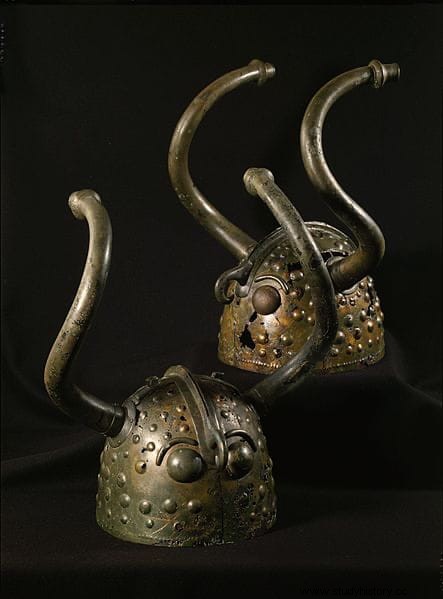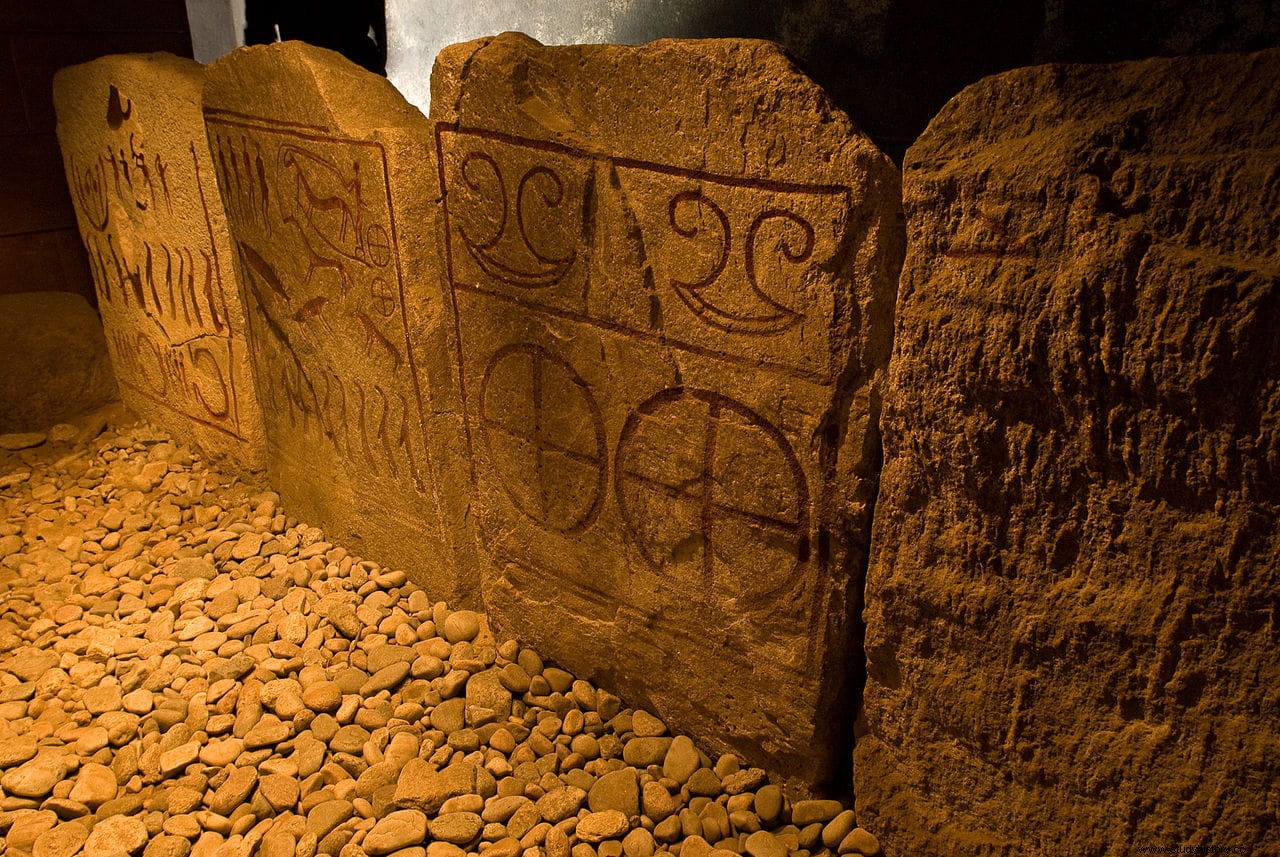Searching for the remains of a plane shot down during the Second World War, researchers from the Thy Museum found in a field in the Danish town of Kallerup, northwest of Jutland, a two-sided bronze statuette with a helmet and horns, as well as a ritual axe.

Both pieces date from the Nordic Bronze Age, around 1000 BC. The helmet on the statuette is very similar in shape to the two ceremonial helmets found in 1942 at Veksø, a type of horned helmet that has also been found in petroglyphs in Sweden and the Iberian Peninsula, as well as on bronze figurines from the Nuragic culture of Sardinia, which emerged around 1700 BC

The figure, with two faces, is the upper part that should have been inserted into a ceremonial rod or cane.
The axe, which has an approximate diameter of 30 centimeters, is certainly special, since it has a shape not found until now in other finds, whose closest parallel would be in those represented in the petroglyphs of the burial of the Tumba del Rey in Kivik, Sweden.
Both the helmet and the ax often appear together, so archaeologists believe they may be a possible representation of a deity.
According to the experts at the Thy Museum, it is an extremely rare find that will contribute to the understanding of the cosmology of the Nordic Bronze Age. Archaeologist Marie Posselt even claims that it is one of the most important discoveries of the last century in Denmark.

At the moment both pieces will be subjected to computerized tomography and other analyzes once they are completely extracted. They hope to find traces of organic material inside the bronze.
The archaeologists do not rule out that more similar specimens appear in the place, since the excavations continue.

